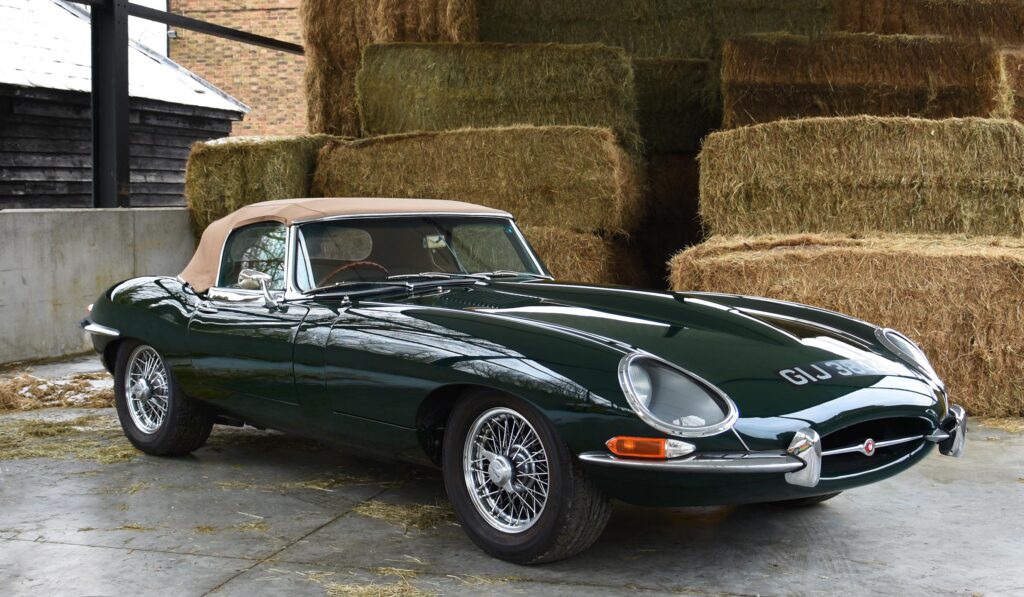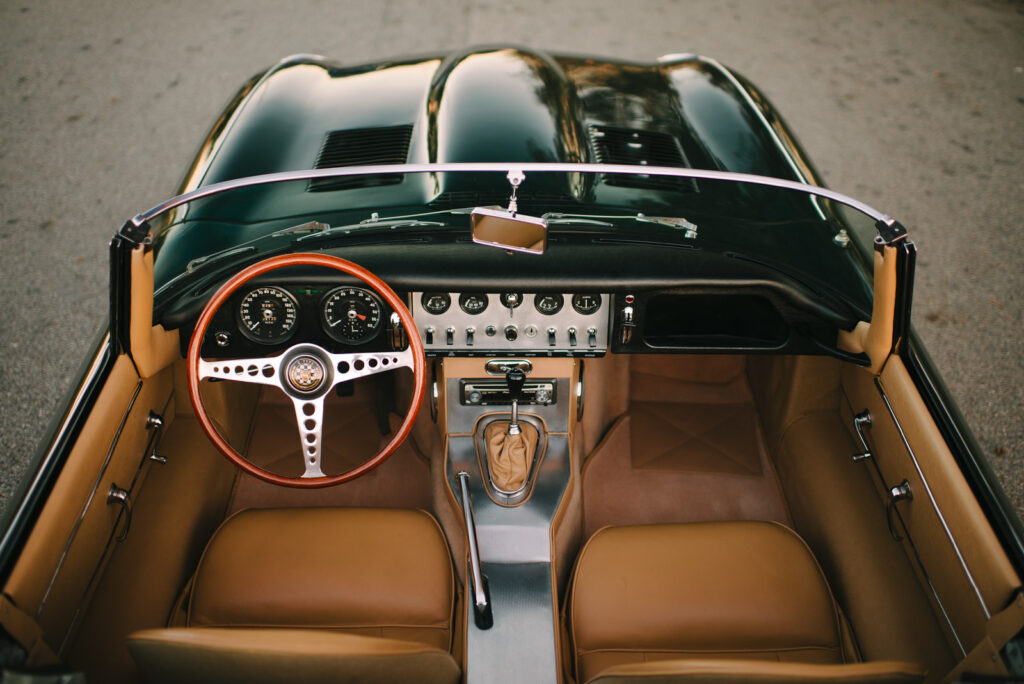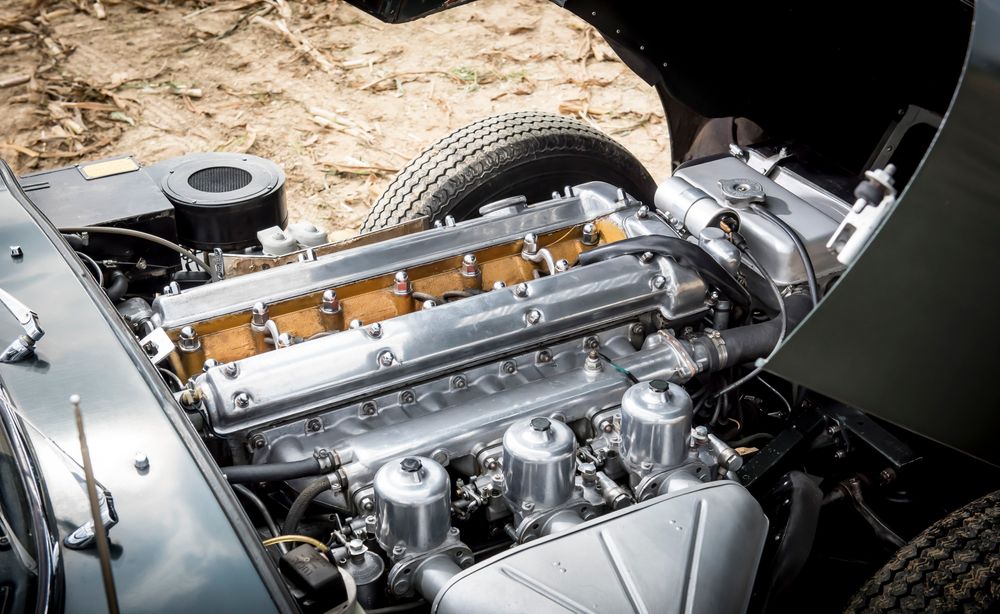,the
The Jaguar Series I, produced between 1961 and 1968, was a significant era in automotive history. Marked by the introduction of several iconic Jaguar models. During this period, Jaguar Cars Ltd, a British luxury car manufacturer, solidified its reputation as a producer of elegant, high-performance vehicles. Attracting enthusiasts worldwide.
Introduction to Jaguar Series I:
The 1960s marked a pivotal moment for Jaguar Cars Ltd, as it showcased a new range of vehicles designed to captivate consumers with their sleek designs, advanced engineering, and impressive performance. The Series I models represented a continuation of Jaguar’s tradition of building high-quality sports and luxury cars that combined style and functionality.
The Legacy of the XK Series:
To understand the roots of the Series I, it’s essential to explore the preceding XK models. The Jaguar XK120, XK140, and XK150, produced from 1948 to 1961, set the stage for the brand’s reputation for high-performance sports cars. The XK series showcased innovative twin overhead cam engines and aesthetically pleasing designs that drew inspiration from aircraft aesthetics.
The Birth of the E-Type:
The Jaguar E-Type, introduced in 1961, is often considered the epitome of automotive design and engineering. Its unveiling at the Geneva Motor Show immediately captured the world’s attention and earned the E-Type the title of “the most beautiful car ever made.” The E-Type featured a monocoque body, independent suspension, disc brakes, and a powerful 3.8-liter inline-six engine capable of accelerating from 0 to 60 mph in under seven seconds.
Evolution of the E-Type:
Throughout the Series I production, the E-Type received several updates. In 1964, the 3.8-liter engine was replaced with a 4.2-liter variant, offering more torque and refinement. The 2+2 coupe version was also introduced, featuring a slightly extended wheelbase and a more practical interior. The E-Type’s popularity skyrocketed in the United States, where it became a symbol of 1960s glamour and sophistication.
Alongside the E-Type, the Jaguar Mark 2, launched in 1959, continued to be a significant model for Jaguar during the Series I era. The Mark 2 was a luxury sports sedan that combined elegance and performance. Making it a popular choice among both executives and motorsport enthusiasts. Its success on the racetrack further solidified Jaguar’s sporting credentials. The Jaguar Series I models boasted several technological advancements that contributed to their allure. For instance, the E-Type’s sophisticated monocoque construction provided exceptional rigidity, enhancing both performance and safety. Its aerodynamic design facilitated high speeds, making it a favorite choice for racing enthusiasts.
Advancements:
Additionally, the independent rear suspension of the Series I models offered a smooth and comfortable ride. A rare feature among sports cars of that era. The suspension setup combined with the E-Type’s lightweight body contributed to its remarkable handling and cornering abilities.
Furthermore, the introduction of disc brakes on all four wheels significantly improved braking performance, enhancing safety during high-speed maneuvers. The adoption of disc brakes was a pioneering move, as many competitors still relied on drum brakes.
ARE YOU A SERIES I JAGUAR E-TYPE BUYER/ SELLER? CLICK HERE:
A notable variant of the E-Type was the Lightweight model. Introduced in 1963, it was designed with racing in mind. To shed weight and boost performance, Jaguar replaced several components with aluminum, including the body panels. The Lightweight E-Type proved highly successful in motorsport, with a limited production run of only 12 units. In addition to the iconic E-Type, the Series I lineup encompassed other Jaguar models. The Mark 2, as mentioned earlier, was a luxurious sports sedan favored by executives and driving enthusiasts alike. It featured a range of engine options, including the legendary 3.8-liter inline-six engine, which provided impressive power for its time.
The Mark 2’s combination of comfort, performance, and stylish design made it a popular choice among discerning buyers. With its success on racetracks and as a getaway car in various films, the Mark 2 gained a reputation for being both elegant and sporty. The Jaguar Series I models enjoyed widespread acclaim, attracting customers from around the world. The E-Type’s popularity, in particular, soared in the United States, where it became a symbol of style and success. Its distinctive appearance and high-performance capabilities resonated with American consumers, leading to strong sales in the North American market.
Additionally, the Series I cars earned accolades and admiration from automotive journalists and enthusiasts. They were frequently featured in prominent automotive publications, further fueling their reputation as coveted and iconic vehicles.
SERIES I MODELS/ YEARS
Cultural Significance:
Beyond the automotive world, the Jaguar Series I models had a significant cultural impact during the 1960s. The E-Type, with its cutting-edge design and association with celebrities and trendsetters, became a symbol of the era’s modernity and youthful rebellion. It embodied the spirit of the Swinging Sixties, a time of cultural revolution and optimism.

The E-Type’s appearances in films, television shows, and fashion shoots further solidified its place in popular culture. It represented not only automotive excellence but also an aspirational lifestyle for those seeking a sense of adventure and sophistication. The Series I models, particularly the E-Type, enjoyed remarkable success in motorsport events. The E-Type’s agility, speed, and endurance made it a formidable competitor on the racetrack. One of its most notable victories came in 1961, when a modified E-Type won the 12 Hours of Sebring, a prestigious endurance race in the United States.
However, the E-Type’s crowning achievement was its success at the 24 Hours of Le Mans. It secured multiple wins in its class, including a notable 1st and 2nd place finish in 1963, showcasing Jaguar’s racing pedigree and engineering prowess.

Evolution to Series II and Series III:
As the 1960s progressed, Jaguar sought to further improve its models. Leading to the introduction of the Series II and Series III cars in subsequent years. Launched in 1968, the Series II featured various updates, including better cooling systems, larger grille openings, and improved seating for better comfort.
The Series III, released in 1971, represented a significant shift, as it featured the powerful 5.3-liter V12 engine, replacing the inline-six units of the Series I and II. The Series III E-Type retained its elegant design while offering even greater performance. Jaguar’s Impact on the Automotive Industry: The Jaguar Series I models not only established Jaguar as a respected automaker but also influenced the broader automotive industry. Their advanced engineering and technological innovations set new benchmarks for other manufacturers to follow.
The Gran Turismo:
The Series I cars also contributed to the rise of the “Gran Turismo” (GT) concept, combining high-performance capabilities with comfortable long-distance touring. The GT concept became popular among luxury carmakers, leading to the development of similar offerings from competing brands. As time passed, the Series I Jaguars became highly sought-after collector’s items, with enthusiasts and investors alike seeking to own these iconic vehicles. Original, well-preserved examples of the E-Type and other Series I models have become rare and valuable commodities in the classic car market.
Restorations of Series I Jaguars have also gained popularity, with skilled enthusiasts and professional restoration shops taking on the challenge of bringing these vintage vehicles back to their former glory. Restoring a Series I Jaguar requires meticulous attention to detail, as well as access to genuine parts and expert craftsmanship.
The legacy of the Jaguar Series I:
Series 1 models endure in the hearts of automotive enthusiasts and collectors worldwide. These vehicles represent a pinnacle of automotive design and engineering, capturing the spirit of an era defined by innovation and elegance.
The Series I cars remain a testament to the vision and ingenuity of Sir William Lyons, the founder of Jaguar Cars Ltd. Lyons’ commitment to producing beautiful, high-performance cars that showcased British engineering excellence is embodied in every Series I model. Jaguar’s journey did not end with the Series I era. Over the years, the brand continued to evolve, introducing new models and embracing technological advancements. The spirit of innovation and passion for automotive excellence that defined the Series I models remained central to Jaguar’s ethos.
Legacy Continued:
Today, Jaguar remains an influential player in the luxury and performance car market. Offering a range of vehicles that blend tradition with modernity. The design elements and engineering principles established during the Series I era continue to influence Jaguar’s current lineup.
The allure of the Series I models has fostered a vibrant community of Jaguar enthusiasts and clubs. All dedicated to preserving the brand’s heritage. These enthusiasts organize events, rallies, and gatherings, providing a platform for owners and fans to share their passion for these iconic vehicles.
The enthusiasm for classic Jaguars also extends to the aftermarket industry, where companies offer reproduction parts, specialized services, and expertise to support the restoration and maintenance of Series I models.
The Jaguar Series I, spanning from 1961 to 1968, represents a pivotal period in automotive history, characterized by the introduction of iconic models such as the E-Type, Mark 2, and XK series. These vehicles not only showcased Jaguar’s commitment to engineering excellence and stylish design but also left an indelible mark on popular culture and the automotive industry.
The Series I cars continue to captivate automotive enthusiasts, collectors, and historians. Preserving their legacy as enduring symbols of an era that celebrated innovation, elegance, and the thrill of the open road. As we reflect on the Series I era, we celebrate the visionaries and engineers who crafted these masterpieces, leaving a lasting impact on automotive history for generations to come.
At Sell A Classic Car, we are classic Jaguar buyers in California. If you’re planning to sell your classic Jaguar, call us at (310) 399-3990 or email us at info@westcoastclassics.com to get the best deal in cash!
